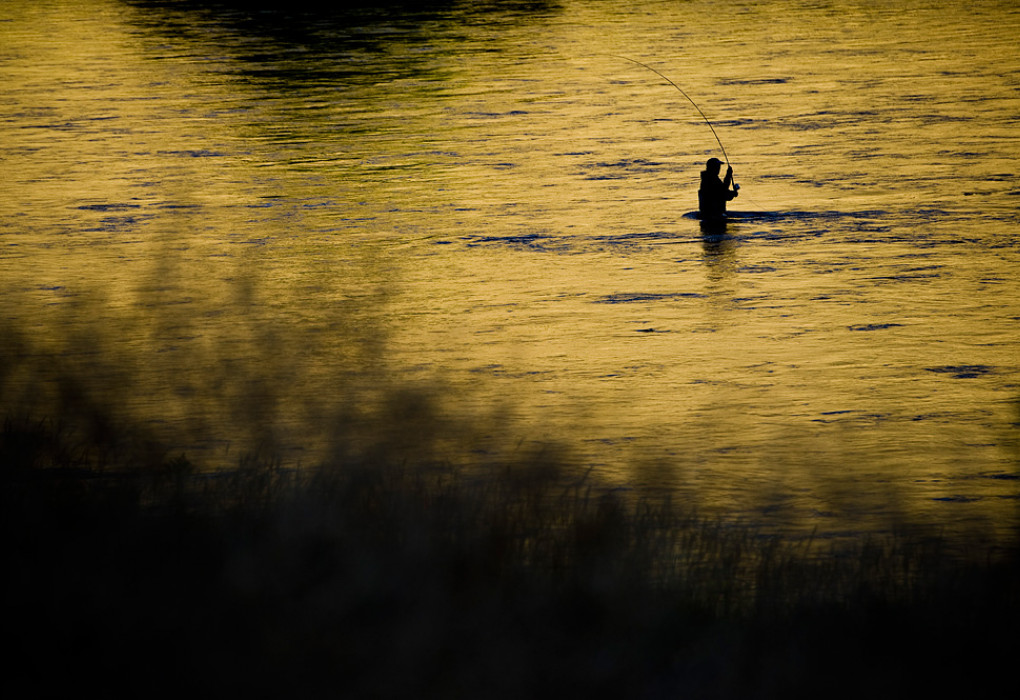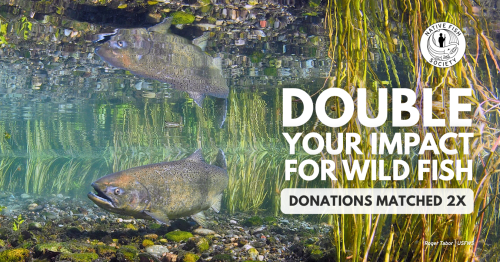In Depth on the Deschutes—Part 1: Where We’re At
The Native Fish Society and its Lower Deschutes River Stewards get a lot of questions about what's going on with the Pelton Round Butte fish passage project. Some people are pretty well-informed about the issues, some have misperceptions about what has occurred, and others just want to know why things seem different when they fish the lower river. There is no easy answer to any questions without some background. The history of relicensing of Pelton Round Butte dam complex, and of the Selective Water Withdrawal tower (SWW) is long, complicated and ongoing.
How did we get here?
As you may know, there are five conservation non-governmental groups (the NGO's), NFS among them, that were signatories to the relicensing of Pelton Round Butte Dam back in the early 2000's. They asked to be represented and were included for both input into the project and as watchdogs for its management.
Relicensing was contingent on significant improvements in mitigation of the damage the dams had done to historic runs of Chinook, sockeye, and steelhead in the Deschutes; and the SWW was conceived as a significant component in the reintroduction of these species to the spawning and rearing grounds in the watersheds above the dams.
One of the main reasons fish passage efforts failed soon after the dams were constructed in the early 1960s was that smolts were unable to find their way downstream through the reservoirs. With the current efforts at mitigation, it was thought that by withdrawing top water from the reservoir, i.e. the water in which smolts migrate, more favorable currents could be created for smolt migration, enabling them to be captured at Pelton Dam and then passed downstream to continue. To address the potential for issues with water quality downstream (including not just temperature but also pH, dissolved oxygen, and other factors), standards for water quality and programs for monitoring were put into place.
For temperature, to avoid drastic changes it was felt best to construct a mode that would allow the SWW to be run in a fashion that resulted in downstream water temperatures over the seasons, matching historic temperatures occurring in the river before the dams were built. The intent was, and remains, to run the SWW to achieve downstream water temperatures as if the dams were not there.
Representatives of the NGOs, and in particular NFS staff and River Stewards, attend the monthly meetings of a group called the Fish Committee, which is a multi-disciplinary group involved in the design, analysis, and management of the Selective Water Withdrawal tower and its associated fish passage program at Pelton Round Butte. This group, which has been meeting for well over a decade, includes dozens of people representing PGE, the Confederated Tribes of the Warm Springs, the five conservation groups, ODFW, USFS, Oregon Department of Environmental Quality, NOAA Fisheries, and others. There are many serious scientists involved and much good work has been done well beyond modifying the temperature of the lower Deschutes. This includes extensive, detailed habitat inventory of the entire watershed; stream restoration; steelhead genetic studies; and much other work. This project has been, from the start, a large-scale experiment, but the Fish Committee works hard to oversee the administration and results of the project. These are not people who are deliberately or negligently trying to ruin a great river system.
Concerns Over Impacts
Within the last year or so there have arisen serious questions about the short-term effects of the manipulation of the reservoirs; about the realistic potential for success of the project; about the time frame and parameters for declaring success or failure of the efforts; and others. As you might imagine, these are not easy to answer, particularly because there are many stakeholders involved, not the least of which are PGE and the Confederated Tribes of the Warm Springs, who greatly benefit from the dam operation.
Recreational stakeholders' concerns have added impetus and urgency to questions about the project. Trout anglers have expressed increasing concerns that the SWW manipulations have had deleterious effects on the blue-ribbon trout fishery that has existed in the lower Deschutes as a result of the dams. Studies of water quality, insect populations, and subsurface plant life done before and after the project's operation were part of the plan of implementation. While studies done to date do not show major effects on the trout and insect populations, these studies have been criticized as being inadequate to detect significant changes. These concerns have been heard at the Fish Committee, and efforts are being made to address them as the required annual monitoring continues. However, continued "watch-dogging" is warranted, and NFS and the other NGOs are a part of the effort. NFS is committed to using the best available science to advocate for wild, native fish, including trout, salmon, and steelhead.
Steelhead anglers have questioned the effect of the SWW on the presence of hatchery fish in the lower river later in the summer. In an ideal river system with adequate natural production (and no dams!), there would be no hatchery fish. However, in the Deschutes, there have been Deschutes-specific hatchery juvenile fish introduced annually to mitigate the dam effects, as well as stray hatchery adult fish from other Columbia tributaries that come into the Deschutes for various reasons.
Although we would prefer to see no (or fewer) hatchery fish of any origin in the Deschutes, the temperature manipulations done in operating the SWW are not designed to specifically affect the presence of hatchery fish in the lower Deschutes. The causes of change in populations of stray fish in the lower river, and the warmer water temperatures that have been experienced in recent years, are complicated and probably multifactorial, including climate change, ocean conditions, droughts, and to some extent the SWW.
We are convinced that the Fish Committee and the operators of the SWW have understood the need to study the downstream effects of their manipulations, but with the crazy conditions we've experienced in the last few years, parsing out which factors are significant is difficult. Good science demands good data over adequate time periods, and there are only a few years of data available so far, less than two generations of anadromous fish life cycles, complicated by unexpected variables. It's entirely possible the recent lower river conditions could have occurred in the absence of the SWW.
Recovering Sustainable Runs
As to the stated goal of the project, to achieve sustainable runs of summer steelhead, fall Chinook and Sockeye with origins above the dams, results have been disappointing and mixed.
Perhaps the most encouraging result was the return in 2016 of over 600 adult sockeye salmon with upstream origin, who were in turn passed upstream to spawn. In the spring of 2017, more than 275,000 sockeye smolts were collected at Pelton Dam and passed downstream. These kinds of numbers could be the beginning of reestablishment of a completely lost sockeye run in the Metolius basin. However, results with Chinook and steelhead have been much more disappointing. How long should the project continue to run? It's tough to answer, and different stakeholders will have different answers.
What is the role of the Native Fish Society?
We were signatories to the relicensing of Pelton Round Butte under the terms that lead to the experiment of the SWW project in the hope that it would offer the possibility of the reestablishment of sustainable runs of wild steelhead, Chinook and Sockeye salmon in the Upper Deschutes watershed. As advocates for the fish, we wanted to be part of the process rather than sitting by waiting to see what happened.
With the other NGOs, we are committed to continuing our roles as watchdogs and advisors on this project. In recent months, we have been raising concerns in the Fish Committee about the shifting water quality standards that govern the project, and one thing we've noticed is that PGE and the Fish Committee are increasingly aware of the concerns that people are raising. Our recent letter to Governor Brown is but one example of our efforts to communicate these concerns as we fulfill our role as watchdog.
Nevertheless, given the time, effort and expense of the project over the last two decades, as well as the complicated mix of stakeholders involved, getting this big ship to change direction, or even abandon its voyage if necessary, will be a slow and potentially contentious process. Because we are committed to advocating for the river and its wild, native fish, we will continue to be involved.
To that end, we have established a set of priorities and goals we will be working to accomplish in the coming year, which we will share in the next part of our in depth look at the Deschutes.
Written by Mark Metzdorff - Lower Deschutes River Steward


